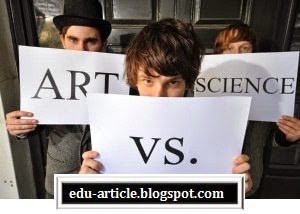Much of the controversy of management being art or science is based on description of the fact that the earlier leaders of industry used intuition, hunches, commonsense, and experience in managing organizations. They were not well educated, they were not trained professional managers, but they managed their businesses brilliantly. However, commonsense and science differ considerably in solving the problems. Examples are Dhirubhai Ambani, Jamsetji Nusserwanji Tata and G.D.Birla…the list is big. In 1919, Ghanshyamdas Birla was in no better position. He had fought hard with his family and the colonial establishment to start a jute mill. World War I broke out before he could place orders for his machinery. He had based his projections on Rs 6,000 per loom. The price shot up to Rs 16,000. He went ahead.
In 1950, aged 17, Dhirajlal Hirachand Ambani sailed in a steerage class of ship to Aden to search for a job. For the next eight years, he sweated it out. Later in his life, without a single educational degree he created an empire called Reliance Industries.
Management is Science because of several reasons like – it has universally accepted principles, it has cause and effect relationship etc, and at the same time it is art because it requires perfection through practice, practical knowledge, creativity, personal skills etc. Management is both an art and a science.
Artistic application of management know-how is a must for solving complex situations in organizations. It is understood that managing is doing things artistically in the light of the realities of a situation. Human skills cannot stand alone; they need to be aligned with conceptual skills and technical skills. Therefore, theoretical knowledge of management is not adequate or relevant for solving the problems. A manager gains experience by continual application of management knowledge and facing new experiences. By solving many problems, a manager develops more skills and abilities for translating knowledge into practice.
Application calls for innovativeness and creativity; Larry Page of Google is one such example of a businessperson who can endure a challenge, while also face criticism. Larry and his business have faced much criticism and received ample praise over the years for his company’s actions. But whenever he was caught in the midst of the storm, he has never let what others think influence him from pursuing the course for his company that he considers the best. The art of management is in knowing how to accomplish the desired results.
Art may be defined as personalized application of general theoretical principles for achieving best possible results. Apple Inc’s Tim Cook is often compared to Steve Jobs. It is difficult to follow Steve Jobs, but, Tim Cook is doing a tremendous job. Rather than attempt to match the consumer-facing innovations Steve Jobs had been known for, Tim Cook is forging into the future with his own new advances, such as Apple’s newest original inventory management techniques.
Traditionally, creativity was linked with people in artistic professions such as writers, painters or musicians. But, in today’s competitive business world, the need for creativity has transitioned into the business world. It has become increasingly important for organizations to rely on creative thinking, in an effort to distinguish themselves from competitors. Jeff Bezos of Amazon prefers focus on the customer. It is famous that in every meeting he leaves an empty seat for a customer to represent them. He considers the customer to be the most important person in the room, even if there is no customer present physically in the room. Bezos has made the customer a key component of his business strategies, customers find him very inspiring. He always portrays through his strategies that at the centre of his business are his customers. Amazon grew in leaps because of cultivated customer value.
Most science and engineering students are good at managing businesses because they are good at analysis and solve problem in the real word specifically based on their subject. Businesses need engineering managers to oversee projects, product design and development, operations; create strategic plans; handle budgets, costs, and financing; and interface with marketing.
Frederick Winslow Taylor was one of the first management thinkers. Taylor is known for his thinking of scientific management. He advised to scientifically select, train, and develop each worker rather than passively leaving them to train themselves. Taylor concentrated more on productivity and wages to be paid based on productivity. He stressed on time and motion study and other techniques for measuring work. Apart from this, in Taylor’s work, there also runs a strongly humanistic theme. He felt ideally that the interests of workers, managers and owners should be synchronized.
Henri Fayol was a French coal-mine engineer, director of mines and modern management theoretician. His scientific management theory was formed on the bases of business administration and business management. He introduced the fourteen principles of management. In the academic world, this is also known as Fayolism.
Management science theory is based on the thought that a contemporary approach to management that focuses on the use of rigorous quantitative techniques which help managers make maximum use of organizational resources to produce goods and services. It is also known as the mathematical or quantitative approach. In quintessence, this theory is a contemporary extension of scientific management, which, as developed by Taylor, also looks at quantitative approach to measuring the employee and his task in order to raise efficiency. The art to get maximum productivity is to use permutations and combinations as per employee’s strength, desire to work, desire to learn and the motivation techniques used by the management.













































